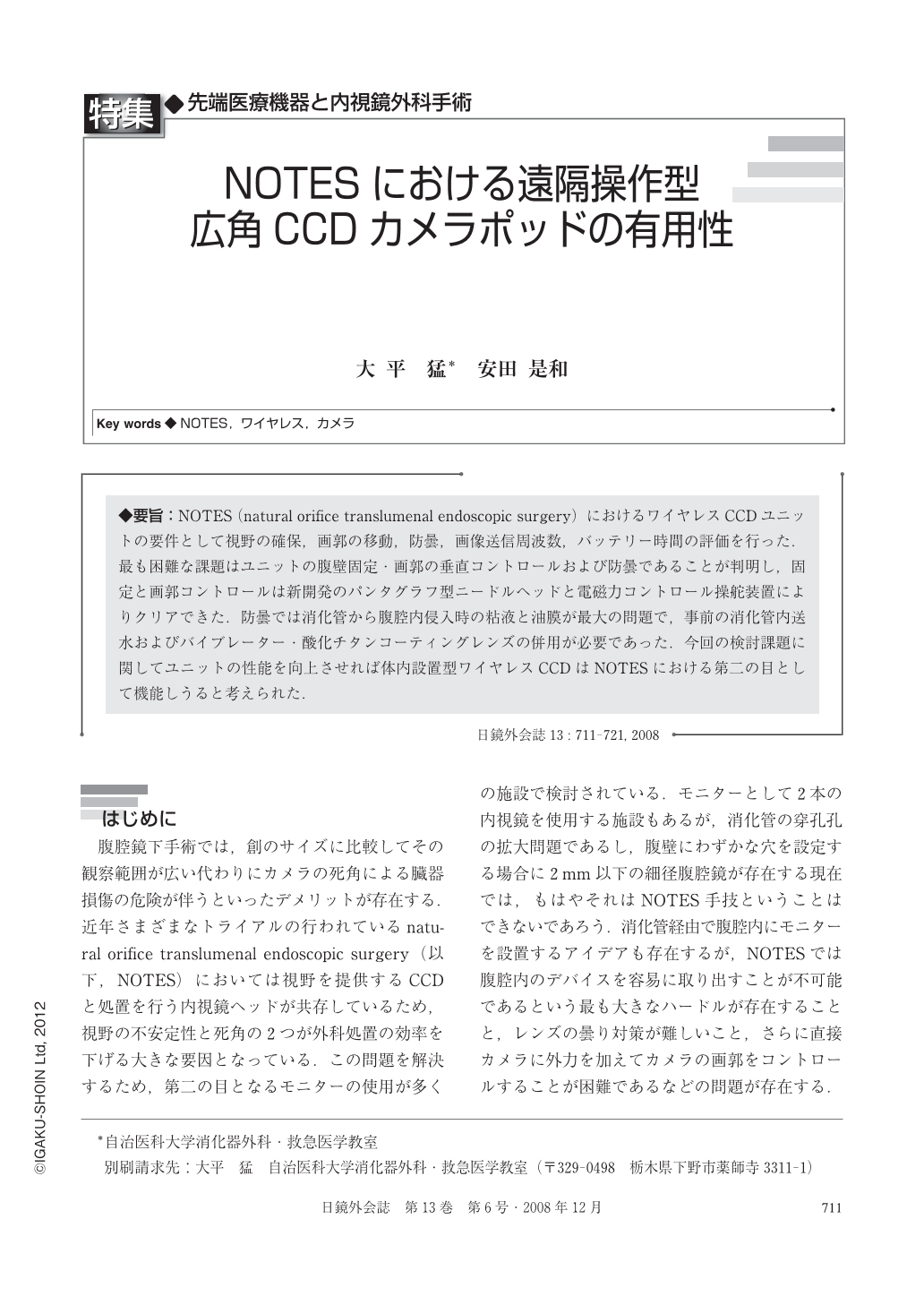Japanese
English
- 有料閲覧
- Abstract 文献概要
- 1ページ目 Look Inside
- 参考文献 Reference
◆要旨:NOTES(natural orifice translumenal endoscopic surgery)におけるワイヤレスCCDユニットの要件として視野の確保,画郭の移動,防曇,画像送信周波数,バッテリー時間の評価を行った.最も困難な課題はユニットの腹壁固定・画郭の垂直コントロールおよび防曇であることが判明し,固定と画郭コントロールは新開発のパンタグラフ型ニードルヘッドと電磁力コントロール操舵装置によりクリアできた.防曇では消化管から腹腔内侵入時の粘液と油膜が最大の問題で,事前の消化管内送水およびバイブレーター・酸化チタンコーティングレンズの併用が必要であった.今回の検討課題に関してユニットの性能を向上させれば体内設置型ワイヤレスCCDはNOTESにおける第二の目として機能しうると考えられた.
Introduction : Because an endoscope is used in NOTES, the obtained image is very limited compared to a laparoscope. Furthermore, the image fluctuates simultaneously with manipulations and a stable visual field is difficult to obtain as well as the entire image of the manipulations. We developed a micro CCD camera that is insertable through the gastrointestinal tract and that is fixable to the abdominal wall, successfully providing NOTES with a stable visual field.
Methods and Procedures : A micro CCD camera, a battery-contained independent image teleporter is insertable intraperitoneally through the gastrointestinal tract. The camera has a mechanism by which it is easily removable from the endoscope tip and possesses in its forefront a mechanism by which it grasps and hangs from the abdominal wall after entry into the peritoneal cavity. The CCD micro-camera is fixed to the abdominal wall with a needle-type fixing unit of pantograph mechanism that is extruded by the wireless activation of an antifogging mechanism in the intraperitoneal cavity. The CCD unit that has photocatalyst and a physical wiper mechanism, exerts its antifogging ability in the intraperitoneal cavity. A dry box and a task for conventional LAS were used to assess visual field securement and image stability. Subsequently, two pigs were used to assess the image stability and the antifogging ability of the CCD camera in the intraperitoneal cavity.
Results : The dry box completely maintained image stability. In animal study, the image fluctuated in association with the slight vibrations of the abdominal wall when inserting the camera into the peritoneal cavity of the animals. However, the manipulations themselves of NOTES never affected the fluctuations of the image. Regarding fogging the maximum issue of an intraperitoneally insertable CCD camera, we successfully verified that the camera can obtain a sufficient antifogging ability when prepared in such a manner to certainly fulfill the setting conditions for the photocatalyst on the CCD lens. Conclusions : We verified that a micro CCD camera, that is attachable to the abdominal wall independently and separately from the endoscope, could be a useful device visual field securement in NOTES.

Copyright © 2008, JAPAN SOCIETY FOR ENDOSCOPIC SURGERY All rights reserved.


